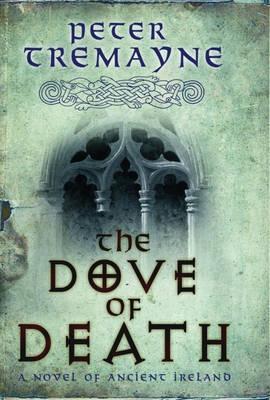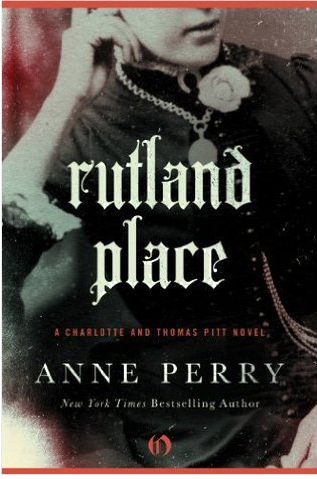I received this book for free from the library in exchange for an honest review. This does not affect my opinion of the book or the content of my review.
Source: the library
The Second Death
by
Peter Tremayne
historical mystery in Hardcover edition that was published by Minotaur Books on July 26, 2016 and has 352 pages.
Explore it on Goodreads or Amazon
Other books by this author which I have reviewed include Valley of the Shadow, The Dove of Death, The Chalice of Blood, Murder Most Medieval: Noble Tales of Ignoble Demises, Behold a Pale Horse, The Seventh Trumpet, Atonement of Blood
Twenty-sixth in the Sister Fidelma historical mystery series set in the Ireland of A.D. 671 and revolving around Sister Fidelma and her husband, Brother Eadulf.
My Take
The Second Death was fascinating in terms of how Fidelma solves this mystery (we’re not privy to a number of the clues) and rather bland in terms of the action. Which I don’t understand about myself, as there is a bit of turmoil — heck, just ask Eadulf about his problems! Part of me suspects it’s because of Saran and the guards and monks within Cill Cainnech and their attitudes toward Fidelma. Petty of me…
It’s layers of plots within plots, and betrayals at different levels. And Eadulf is sadly naive in some aspects of this story. I certainly didn’t like Abbot Saran. Guilt was all over him like a cheap suit, and he certainly was nasty toward Fidelma. Interesting that Saran had all this money to economically improve the abbey and Cill Cainnech.
It’s an intriguing look at how the Catholics destroyed an equal opportunity Ireland with its protection of women (as evidenced by Ríonach’s plight), its fair laws and standards, and the reasonable punishments meted out to one more like the Penitentials wanted with their pain, cruelty, and insecurities.
Fidelma can be preemptory and snide, and I love that she is so confident and willing to accept her weaknesses.
“We are all beginners at another person’s profession.”
It is frustrating trying to read these names and keep track of who is who and what is a where. Fidelma and Eadulf are easy enough, but when I start getting into the characters involved in the individual stories…oh, boy.
“Arrogance is a sign of inferiority, for a true prince of his people is secure enough in his station not to need to assert his rank.” … “a mask to hide one’s deficiencies.”
A sentiment that should apply to anyone, no matter their station in life.
I don’t understand the awe in which one of the kidnappers views the Eóganacht, Fidelma’s people. Sure, I grasp that Fidelma is quite formidable in her intelligence, but how does this religious angle work in?
Despite all our technology (maybe because of it?), it seems that we’re not alone in gossip and twisted angles in the news. Even ancient Ireland got their news twisted to suit the prejudices of those who gossiped.
It’s yet another tale of the greed for power hiding behind religion.
The Story
IThe Great Fair of Bealtain is almost upon the fortress of Cashel, and a line of painted wagons carries entertainers to mark the occasion. But preparations take a deathly turn when one of the rheda is set alight, and two corpses are found, poisoned.
As Sister Fidelma and Eadulf investigate, they are quickly plunged into the menacing marshlands of Osraige — where the bloody origin of the Abbey of Cainnech is wreaking its revenge.
Fidelma and Eadulf must face untold mortal danger before they can untangle the symbolism of the Golden Stone and the evil perpetrated by mysterious members of the Fellowship of the Raven, an evil that strikes at the very heart of the kingdom.
The Characters
The Princess Fidelma is no longer a religieuse, but is still a dálaigh qualified to the level of anruth, the king’s sister, and married to Brother Eadulf, originally from Seaxmund’s Ham, an Angle trained in their law and a physician who had studied at Tuaim Brecain. Alchú is their young son. Muirgen is his nurse. Aonbharr is Fidelma’s favorite horse. Egric is Eadulf’s dead brother.
Cashel is…
…the capital of the kingdom of Muman with Colgú its king and Fidelma’s brother. Finguine is Colgú’s heir. Aidan is the temporary head of the Warriors of the Golden Collar, the king’s elite bodyguard, a.k.a., the Nasc Niadh. The lucht-tighe are the elite of those elite. Other Warriors include Luan and Enda who is a great tracker. Dar Laga is the airnbetach, housekeeper, of the castle. Chief Brehon Fíthel is the head of the dálaighs in Muman. Abbot Conchobhar is the physician, apothecary, and medical examiner for Cashel. Rumann is an innkeeper and brewer and related to Ferloga, another innkeeper over at Rath na Drinne, who is appointed the new Fair Master. Lassar is Ferloga’s wife. Abbott Segdae is Colgú’s spiritual advisor. Ségene is the Abbot of Imleach.
Failbe Flann had been Fidelma and Colgú’s father. King Fiachu Muillethan is another ancestor who gave Mogh Ruith some land, Magh-Féne, whose people are the best metal-workers. Máenach mac Fingin, Fidelma’s cousin, had been king in the past; his chosen heir was Cathal Cú-cen-máthair instead of Máenach’s son, Ailill (The Seventh Trumpet, 23), with Colgú chosen as tánaiste.
Oenach is…
…the Great Fair of Cashel. The Cleasamnaig Baodain are performers who journey from fair to fair and are led by Baodain who tells stories and plays various instruments. His wife is the irascible Escrach, who plays a type of harp. Ronchú is a conjuror; his wife, Comal, is his assistant. Echdae and his wife, Echna, are equestriennes; Tóla is their groom. Maolán, a contortionist, and his wife, Mealla, are new to the troupe. Barrán is the Strong Man. His wife is Dub Lemna. Ultan and Ultana were traveling through.
Lands that owe tribute to Muman include:
Cill Cainnech is a port town in Osraige, a border territory ruled by the Prince Tuaim Snámh who tends to switch allegiances with each breath. Feradach is the cennfeadh of the guard in Cill Cainnech, Coileach’s son, and Brehon Ruán’s nephew. The abbott is Saran, son of Faelchair and cousin to the prince of Osraige. Brother Failge is the rechtaire, steward, at the abbey. Brehon Ruán has his homestead on the Hill of Ruán just outside Cill Cainnech and serves Coileach, the Lord of the Marshes. Learghusa had owned the Homestead by the Crossing before he and his family succumbed to the Yellow Plague. The shepherd was his cousin. Rechtabra owns a farm and is of the Uí Airbh clan. Ríonach is Rechtabra’s abused wife. Rian is her terrier. Brother Finnsnechta is a hermit.
An Sionnach (the Fox) is the prince of Tethbae. No one trusts him. The arrogant Cerball, Lord of Cairpre Gabra, is one of his people. Cerball is working with Febal, Bishop and Abbott from the Abbey of Clochar in Caipre Gabra. Gelgéis is the Princess of the Éisle in whom Colgú is interested (The Seventh Trumpet, 23).
Other of the five kingdoms in Ireland include…
…Uisneach, which is the epicentre of the kingdoms. Its Fair Master is Lord Iragalach of Clann Cholmáin. High King Cenn Faelad has a cousin, Niall, who is the son of Cernach and grandson of High King Diarmait.
The Fellowship of the Raven is…
…an Old Faith cult (based in Druidism) that worships the Mórrigán, (she’s a triune goddess with three “faces” including Badh and Macha). Duach and Cellais are members. The Cloch Ór, a.k.a., Cermand Cestach, is the Golden Stone and had been guarded by King Cairpre of the Old Religion. His son, Aedh (a.k.a., Mac Cairthinn), converted to the New Faith and built his Abbey of Clochar and its cathedral around this stone. An Lair Derg had sons, one of whom at least became a sun god, Mogh Ruith (the Slave of the Wheel or the Red Mare), and Donn is their Lord of the Dead.
Abbot Laisran of the Abbey of Darú, a distant cousin, had been the one who suggested Fidelma join the mixed house of Cill Dara all those years ago. And we do learn why she chose to do so. Brehon Morann is an old mentor of Fidelma’s. Devil’s bread is a plant used as a sedative in small doses. Sister Dianaimh was in a previous story. Beccan had been the weak steward who betrayed Colgú (Atonement of Blood, 24).
Cainnech of the Corco Dálainn and a man of learning was one of the New Faith (Christians) who slaughtered every Druid — man, woman, and child — at what is now Cill Cainnech seventy years ago. Cronan of Gleann an Ghuaill is a great warlord (but whether he’s in the past or the present, I don’t know). There are five levels to which a dálaigh, a lawyer, can qualify: anruth is second from the top. A brehon is a judge and the first level. Dergthach is what they call Greek fire. It’s also known as Tene Gregach. Althair means father. Imagine a gaily painted gypsy wagon when you read about the rheda. A flescach is a person who is less than seventeen years old, under the age of choice. The Penitentials are a group of Christians who believe in flagellation and extreme punishment.
The Cover and Title
The cover is a gorgeous Irish green with Celtic knot side borders and a frame of the same knots around the inset image of the burning rheda on the road to Cashel and its castle up on the hill, a pair of oxen looking on from a closer bend in the road. The title at the top and the author’s name at the bottom are in a hammered gold with a white line of information.
I think the title refers to the Old Faith, as it dies The Second Death.















